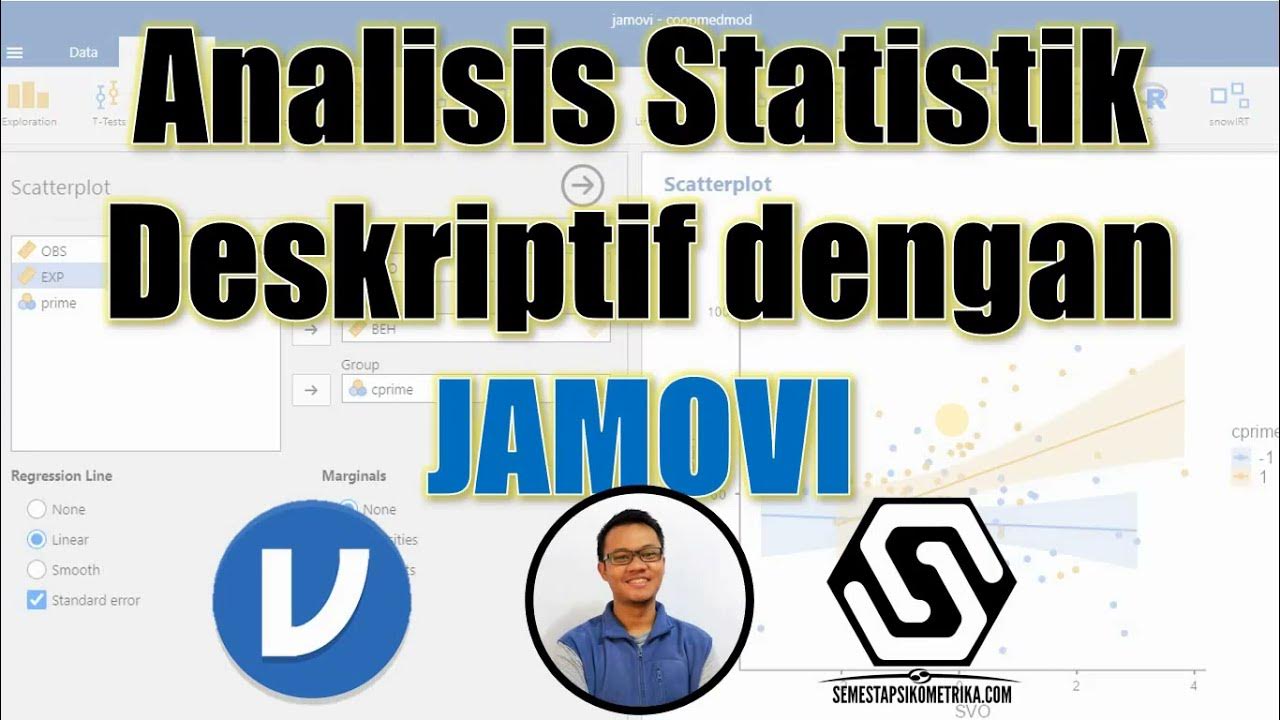ANALISIS MEDIASI MENGGUNAKAN MEDGRAPH
Summary
TLDRThis tutorial covers how to conduct a mediation analysis using Mgraph and JASP software. It walks through the process of inputting data for career development, work motivation, and employee loyalty, performing regression analysis, and calculating correlations. The key concept is testing whether work motivation mediates the relationship between career development and loyalty. The results show a partial mediation effect, with the direct influence of career development on loyalty being stronger than the mediated effect. The tutorial also includes a Sobel test to confirm the significance of the mediation and concludes that the mediation effect is small but present.
Takeaways
- 😀 The tutorial focuses on performing mediation analysis using the Mgraph tool from Victoria University of Wellington.
- 😀 Key variables for analysis include career development (X), work motivation (mediator), and loyalty (Y).
- 😀 Before starting the analysis, it's important to gather correlation data between the variables.
- 😀 The first step involves entering the variables (X, mediator, and Y) into the Mgraph tool for analysis.
- 😀 Regression analysis results (unstandardized coefficients, standard error) need to be input for both career development and work motivation variables.
- 😀 The second step is to input the correlation between career development and loyalty, as well as work motivation and loyalty.
- 😀 A sample size of 377 is used for the analysis, and this must be entered correctly for accurate results.
- 😀 The analysis involves understanding both direct and indirect effects (through the mediator) of career development on loyalty.
- 😀 The Sobel test is used to assess whether the mediation effect is statistically significant. A p-value less than 0.05 indicates significant mediation.
- 😀 Results indicate that work motivation partially mediates the relationship between career development and loyalty, though the mediation effect is relatively small.
- 😀 The final output includes a graphical representation of the relationships between the variables, showing how the mediator influences the direct and indirect effects.
Q & A
What is the purpose of the mediation analysis discussed in the script?
-The purpose of the mediation analysis is to examine whether work motivation acts as a mediator in the relationship between career development and employee loyalty.
Which website and tool are used for conducting the mediation analysis?
-The mediation analysis is conducted using Mgraph, an online application developed by Victoria University of Wellington.
What are the three variables involved in the mediation analysis?
-The three variables involved in the mediation analysis are career development (X), work motivation (mediator), and employee loyalty (Y).
What is the first step in performing the mediation analysis?
-The first step is to enter the variables into the Mgraph tool, specifying the independent variable (career development), mediator (work motivation), and dependent variable (employee loyalty).
How are the correlations between the variables entered into the tool?
-The correlations between the variables (career development, work motivation, and loyalty) are entered manually into the Mgraph tool after preparing the correlation data, ensuring that the values are correctly formatted (using dots for decimal points).
What statistical result is used to test the significance of the mediation effect?
-The Sobel test is used to assess the significance of the mediation effect. A significant Sobel value (less than 0.05) indicates that the mediation is significant.
What does a Sobel test result with a p-value less than 0.05 indicate?
-A Sobel test result with a p-value less than 0.05 indicates that the mediation effect is statistically significant, meaning that work motivation significantly mediates the relationship between career development and employee loyalty.
What is the meaning of 'partial mediation' as discussed in the script?
-Partial mediation means that the mediator (work motivation) has a smaller, but still measurable, effect on the relationship between the independent variable (career development) and the dependent variable (employee loyalty), rather than a complete or full mediation.
Why is the direct effect of career development on employee loyalty more significant than the mediated effect?
-The direct effect of career development on employee loyalty is more significant because many employees show direct loyalty due to career development without the need for work motivation as an intermediary. The mediated effect is smaller and less impactful.
How can the partial correlation be calculated using other software?
-Partial correlation can be calculated using other statistical software like SPSS or web-based tools. The process involves controlling for other variables (like work motivation) while assessing the relationship between career development and employee loyalty.
Outlines

This section is available to paid users only. Please upgrade to access this part.
Upgrade NowMindmap

This section is available to paid users only. Please upgrade to access this part.
Upgrade NowKeywords

This section is available to paid users only. Please upgrade to access this part.
Upgrade NowHighlights

This section is available to paid users only. Please upgrade to access this part.
Upgrade NowTranscripts

This section is available to paid users only. Please upgrade to access this part.
Upgrade NowBrowse More Related Video

The JASP Workspace: Beginners Guide on How to Use JASP for Statistics (2 of 6)

Mediation Analysis Part 2 (with Demonstration) | TAGALOG - ENGLISH

Reliability Analysis using minitab 18

Tutorial Analisis Regresi Tunggal dengan JASP

Cara Analisis Statistik Deskriptif dengan Jamovi

Tutorial SEM PLS dengan Variabel Mediasi Menggunakan SmartPLS 4 || Lengkap dengan referensi
5.0 / 5 (0 votes)